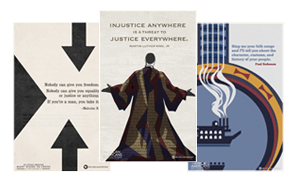J. A. Rogers’ 100 Amazing Facts About the Negro
In 1934, Joel Augustus Rogers, a highly regarded journalist in the black press, published a remarkable little book of 51 pages titled 100 Amazing Facts About the Negro With Complete Proof: A Short Cut to the World History of the Negro. I have been intrigued by this book, and by its author, since I first encountered it as a student in an undergraduate survey course in African-American history at Yale, taught by the venerable American historian, William S. McFeely.
I don’t think that Rogers’ work was assigned reading in the course, but hungry to learn about “the Black Experience,” as we called it at the time, I essentially bought most, if not all, of the books in the Yale Co-op’s Black Studies section. Among those titles, the works of Rogers were especially fascinating for their range of the author’s ambition and imagination, such as his pioneering analysis of Sex and Race, published in three volumes between 1941 and 1944, and his fascinating biographical dictionary The World’s Great Men of Color, published in 1946 and 1947 in two large volumes.

J. A. Rogers (Public Domain)
If America hadn’t already invented the “one-drop rule” by this time, Rogers most probably would have. He seems to have had some sort of miscegenation-meter, which he used to “out” all sorts of “white” people as having black ancestry. And while he erred on the side of excess as he peered into the proverbial woodpile, Rogers got it right an impressive amount of the time, especially considering when he was publishing his work. (At the other end of his collected works, though, stands The Five Negro Presidents, which, shall we say, would get the “Black History Wishful Thinking Prize,” hands down, were there such in existence.)
Rogers was a self-educated man, by and large. According to his wife, Helga, his father was a schoolteacher and a Methodist minister in Jamaica, before becoming the manager of “a large plantation.” Joel Rogers served in the British army in the Royal Garrison Artillery in Port Royal, Jamaica, then migrated to the United States in 1906. According to his biographer, Thabiti Asukile, he enrolled in the Chicago Art Institute in 1909, supporting himself as a Pullman porter during the summers between 1909 and 1919. In 1921, Rogers moved to Harlem, met and became friends with both Hubert Harrison, the West Indian radical activist and writer, and the African-American journalist and novelist George S. Schuyler.
Rogers was soon launched on a path that would make him one of the leading black journalists of his generation. Rogers wrote regularly for the Pittsburgh Courier, the New York Amsterdam News, and the Chicago Defender, and he contributed several important essays to A. Philip Randolph’s radical-socialist Messenger Magazine during the Harlem Renaissance. (He also wrote the only essay on that emerging art form called “jazz” in Alain Locke’s seminal 1925 anthology The New Negro.) But the triumph of his career as a journalist, without a doubt, was his coverage of events in Ethiopia. The Courier sent Rogers — the only African-American journalist on the ground — there to cover the Italian occupation of Ethiopia (1935-1936), including an interview with Emperor Haile Selassie, whose coronation Rogers had also attended in 1930.
Rogers worked for the Courier from 1921 to 1966. In 1934, the same year in which he published 100 Amazing Facts About the Negro, he began publishing a weekly column titled “Your History,” which he retitled “Facts About the Negro” in 1962.
I have been thinking about Joel A. Rogers quite a lot recently, as I start to film our newest PBS series. It’s the first attempt, we believe, to document the entire sweep of African-American history from the beginnings of the trans-Atlantic slave trade in the early years of the 16th century to the election (and we hope the re-election) of the nation’s first black president — 500 years of the history of the African presence in the New World. The six-part series, called The African Americans: Many Rivers to Cross, is scheduled to air in the fall of 2013, exactly 500 years after the first documented black man, who happens to have been free, landed in what is now the state of Florida. (But more on him in a later column!)
And I have been thinking about the pioneering work on black history by journalists such as Rogers, and that of many of the greatest professionally trained academic historians, such as W.E.B. Du Bois, Carter G. Woodson, Rayford W. Logan, Charles H. Wesley, John Hope Franklin and John W. Blassingame Sr., among many others whose work I am studying as our producers and some 50 professors of African-American history help to shape each episode of our series, and decide what incidents to include.
The more I research the history of African Americans’ ancestors in this country, the more astonished I am by two seemingly contradictory things: First, how people from as many as 50 ethnic groups were plucked from West and West-Central Africa and then dispersed as property throughout the American slave community, North and South, and then with noble heroism and courage, determination and pure grit and great collective will, created one of the world’s truly great cultures; and second, at the extent of these same people’s surprising, often counterintuitive opinions within the race, as well as their widely varied beliefs and disagreements and debates, over just about every aspect of politics, culture, strategy, religion — you name it.
It seems as if our people have been arguing with each other about how best to ease their collective burden almost since the day the first group arrived as slaves on these shores! And why should that surprise us? Why should African Americans be any less complex than other groups of human beings? We sometimes tend to romanticize the black past, imagining a time when our people were united, when they “spoke with one voice.” Never happened!
Even at the worst times in African-American history, there seems never to have been one “African-American” opinion or pattern of behavior about much of anything, as far as I can tell. And that complexity, that insistence upon the integrity of the individual resonating within the group, is what, in part, has made African-American culture and our social institutions the vital forces that they are today. Ralph Ellison reminds us again and again that this is the essence of improvisation, and improvisation is the essence of African-American — and indeed American — culture. We see how this complexity unfolded in the pivotal events that define African-American history.
I have decided to share some of these “amazing facts”. Some of these facts will be as surprising to you as they have been to us. Some you may find inspiring; others may infuriate you. One thing is for sure: Over the past 500 years, our ancestors in this country have been as stubborn, determined, idiosyncratic, individualistic, argumentative and complex as the 42 million African Americans living today are.
And when relevant, we will compare our take on a historical event with what Rogers had to say. Sometimes, he was astonishingly accurate; at other times, he seems to have been tripping a bit, shall we say, as in his “Amazing Fact #8,” which I quote in full: “Beethoven, the world’s greatest musician, was without a doubt a dark mulatto. He was called ‘The Black Spaniard.’ His teacher, the immortal Joseph Haydn, who wrote the music for the former Austrian National Anthem, was colored, too.”
Both claims are false, I am afraid, though I love the work of both composers! But no one can get everything right all the time, correct?
Fifty of the 100 Amazing Facts will be published on The African Americans: Many Rivers to Cross website. Read all 100 Facts on The Root.
Find educational resources related to this program - and access to thousands of curriculum-targeted digital resources for the classroom at PBS LearningMedia.
Visit PBS Learning Media






